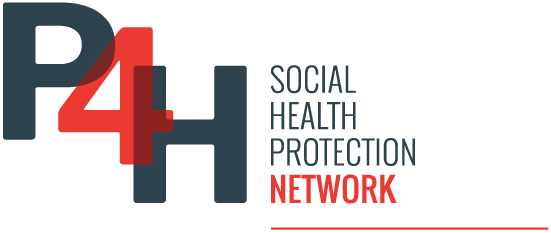The COVID-19 crisis affects all forms of government action, including public financial management (PFM) policies and processes. In this blog, we present our shared understanding of PFM lessons arising from the health response to COVID-19 and offer perspectives to support the development of a coordinated PFM reform agenda in health as countries move towards recovery from this crisis. This contribution is based on a rapid review of PFM processes in countries, designed and administered by WHO in April-May 2020. The study collected and analyzed data from 183 countries on a variety of PFM topics, including emergency spending measures, financial review laws, formulation of spending plans, spending modalities and reporting mechanisms. This work also draws on lessons learned from a growing body of work on PFM in health, and through a number of coordinated projects and initiatives undertaken over the past decade to strengthen and adapt PFM systems in the health sector.
Key PFM lessons learned from the health response to COVID-19
Financing the health response to COVID-19 has been a challenge for all countries. Many PFM analysts agree that the way public budgets are allocated and managed has been just as important to a country’s response to COVID-19 as the overall level of funding devoted to the effort. There have been a number of common PFM issues that countries have encountered during the current crisis: i) how to reprogram budget allocations ; ii) how to accelerate spending on front-line health facilities; iii) how to set up reporting mechanisms to ensure financial transparency and accountability. Although the problems encountered were common to all countries, the speed and effectiveness of each country’s health response varied widely, due to pre-existing weaknesses and bottlenecks in PFM systems. We describe some of these challenges below.
Although most PFM systems incorporate exceptional expenditure procedures into their legal frameworks (e.g. transfers and reallocation policies, activation of reserve funds), certain budgetary features prevented an effective response. For example, in countries where budgets are itemized by budget item/input, the process of reallocating funds to preventive measures, testing and COVID-19 treatments has been tedious. Countries with well-defined and flexible healthcare budget programs – where budget allocation approaches allow for rapid reprogramming of expenditure – have not faced these challenges to the same extent. This has been observed in countries such as New Zealand, France and, to some extent, South Africa.
The COVID-19 crisis revealed another major challenge, linked to the promulgation of budgets for health response. The transition from an executive-led response (i.e. the adoption of emergency regulations to redirect existing resources) to legislative action to refine and adopt new finance laws or supplementary budgets has been uneven across the countries examined. While the adoption of spending plans is, from a PFM point of view, essential for guaranteeing the allocation of expenditure and tracking spending, our review has shown that only half of the countries affected by the crisis have adopted new spending plans. Several low- and middle-income countries (LMICs) have found it difficult to develop and approve spending plans quickly, due to systemic weaknesses in budget preparation and approval processes. Confusion around roles and responsibilities in health budgeting, particularly in decentralized contexts (e.g. between central, sub-national and provider levels), has also been a source of delays and added unnecessary complexity that has inhibited an agile budgetary response to the crisis.
In some countries where new spending plans have been drawn up and adopted, the plans have been formulated following a results-based approach. Some countries have introduced new programs, sub-programs or budgetary activities and formulated them around the overriding political objective of responding effectively to COVID-19. Others, like Nigeria, have created temporary programs by inserting new budget lines into their existing input-based budgets. Both approaches aimed to make the use of resources flexible for the response, while creating a framework for monitoring the performance of newly defined budget programs.
while creating a framework for monitoring the performance of newly defined budget programs.
Another interesting lesson of PFM that emerged from the study of country experiences during the epidemic is the use of alternative spending modalities to accelerate the release of public funds to sub-national levels and/or procurement agencies (depending on institutional health financing arrangements), and/or directly to front-line health service providers. Countries have tried different approaches to balance flexibility with control requirements. Examples from Australia, Belgium, Ghana, India and the Philippines demonstrate the effectiveness of these approaches in channelling resources to where they were most needed, including accelerated spending authorizations at central level, fast-track procedures for budget transfers to sub-national levels, and advances to healthcare providers to complement retrospective reimbursements.
In all countries, financial transparency and accountability were also common challenges. Some reporting mechanisms may have facilitated integrated and transparent monitoring during the crisis more than others. For example, the adjustments made to the Integrated Financial Management Information System (IFMIS) in Italy, Malawi and Timor-Leste appear to have been an effective approach to obtaining simple, integrated expenditure reports for COVID-19. However, the creation of COVID-19 funds in some forty PRFIs to raise external resources and, in some cases, private donations, raises concerns about transparency and accountability. A cursory examination of the legislative provisions relating to the reporting mechanisms of these funds suggests that there is no guarantee of transparency. In addition, the creation of separate funds or entities to channel resources for COVID-19 risks increasing financial fragmentation in healthcare, a sector that is often already characterized by multiple funding streams. When parallel reporting arrangements for COVID-19 are introduced outside the boundaries of existing financial reporting systems, they are likely to add an unnecessary administrative burden to the front lines, without guaranteeing accountability.
Looking to the future: GFP’s new healthcare agenda
Prior to the COVID-19 crisis, many countries had piloted interventions to improve the adaptability and responsiveness of PFM systems, but their transition was often only partially complete. Today’s crisis offers a historic opportunity for countries to accelerate and intensify action on PFM reform in healthcare. The price of inaction is far too high: slow funding flows, misdirected resources and inefficient use of public resources have a high cost for public health and the economy. Based on our analysis, we have developed a set of key recommendations around three complementary actions:
1- Reshaping the role of the health sector in PFM reform:
Healthcare financing specialists have long called for greater flexibility in healthcare spending in PFM systems, suggesting that controls be relaxed at critical points in the budget cycle to give healthcare players more autonomy in the use of resources. While traditional concerns about overall budget discipline and spending efficiency are valid, PFM systems need to be aligned with the fundamental requirements of service delivery for different sectors. In healthcare, this flexibility is needed to manage the changing needs of healthcare services throughout the year, and the challenges created when rigid, excessive input-based controls can lead to inefficiencies in service delivery. The COVID-19 crisis taught us that these specialists were often right. Countries with more flexible spending mechanisms were able to release funds more quickly during the crisis, creating a favorable financial environment for care provision. The crisis has also revealed systemic weaknesses in budget preparation, approval and accounting processes that plague some PRFIs that still lack the fundamentals of PFM. Moving forward, the debate is no longer whether to strengthen the foundations or make PFM systems more flexible; instead, PFM systems should be simultaneously strengthened AND made more flexible, so that there is sufficient flexibility when and where needed, and adequate control over the use of resources. Adjusting PFM approaches should reflect a new balance between compliance, control, flexibility and accountability, to encourage national systems to be more responsive and resilient to the needs of health services. These efforts should be carried out in a consolidated approach, in close collaboration with health sector specialists and stakeholders at sub-national level, to ensure that the decentralization of health budgeting and expenditure functions to sub-national entities does not limit the role and responsibilities of health service providers.
2 – Reduce the use of parallel financial management systems in healthcare.
The healthcare sector already suffers from a proliferation of parallel financial management mechanisms for budgeting resources, and/or spending allocated funds and/or reporting on expenditure. As a result, the organization of health financing in PRFIs is often a mix of on-budget and off-budget mechanisms that frequently overlap, requiring additional reporting while failing to ensure accountability of health sector spending. Too many funding sources prevent detailed reporting on budget execution, undermining the Ministry of Health’s leadership position and ability to ensure allocative efficiency. It also complicates resource management at the facility level, making it virtually impossible for front-line managers to operate effectively. The response to the COVID-19 crisis only exacerbated the problem with the creation of special funds, including at sub-national level (e.g. in Kenya and Nepal). Instead of fuelling the controversy between on-budget and off-budget responses, we believe it is necessary to explore new ways of gradually integrating external funds into national PFM processes and accounts. Effective fiduciary risk models can be developed with country counterparts so as not to undermine domestic PFM systems and financial information systems currently under development. New approaches to using national systems and effectively supporting accountability could include: streamlining financial information reporting mechanisms (e.g. for specific diseases); consolidating financial and non-financial performance information into a consolidated health sector framework; simplifying and making IFMIS easier to use for health expenditure; redefining the roles, responsibilities and capacities of providers in financial management; and strengthening incentives for effective financial monitoring, even at the lowest levels of the health system.
3 – Integrate PFM into future dialogues between finance and healthcare.
Historically, PFM has been overlooked in discussions about the availability of resources in the healthcare sector, and has generally been neglected by healthcare decision-makers. This was due in part to the way in which policy-makers and health experts viewed PFM as a reform component separate from health financing and service delivery. Prior to the COVID-19 crisis, health budgets were chronically underspent in some PRFIs as well due to budget formulation and spending bottlenecks, but this was not systematically addressed as a priority issue. For decades, this has hampered the sector’s resource envelope and its ability to operate effectively, as well as its ability to negotiate higher budget allocations. The COVID-19 crisis demonstrated that PFM has a critical influence on the level of funds available to providers as well as a direct impact on the overall effectiveness of the health response – well-developed PFM mechanisms can provide targeted funding quickly and with the necessary level of accountability for expenditure. As financial and health authorities embark on budget discussions for 2021 and beyond, a much more integrated approach to their dialogue is needed. PFM should be an integral part of budget discussions and health reform programs. Tackling the problems of budget formulation and execution in the health sector will help increase budgetary space for health and address inefficiencies in the use of resources in an income-constrained world. More money without better PFM systems won’t bring better health outcomes!
In summary, the COVID-19 crisis has highlighted persistent weaknesses in PFM systems and bottlenecks that impede efficient healthcare spending and timely delivery of healthcare services. This unique time period offers an opportunity to bridge the traditional PFM debate between flexibility and control. The experience of countries going through this crisis has shown that there are ways to make healthcare spending more agile through a more consolidated, sector-sensitive and responsive approach. We look forward to working within our respective organizations, with industry partners and, most importantly, with country leaders, to define and implement a new approach to PFM in healthcare.
Helene Barroy (World Health Organization, Health Systems Governance and Financing), Srinivas Gurazada (World Bank Group, Governance Global Practice), Moritz Piatti-Fünfkirchen (World Bank Group, Health, Nutrition and Population Global Practice) and Joseph Kutzin (World Health Organization, Health Systems Governance and Financing)
We acknowledge the excellent support and contributions provided by Federica Margini (WHO consultant) for the development of the GFP COVID-19 database and thank all contributors to the WHO GFP COVID-19 survey.
(photo credit: John D Sirlin / Shutterstock)


